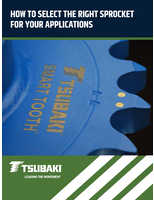Modeling Software includes assisted multiple group analysis.
Share:
Press Release Summary:
With drag and drop functionality, Amos(TM) v5.0 structural equation modeling software package allows researchers to propose theories of how and why variables might affect each other and verify whether data supports proposed models. Using structural equation modeling (SEM), software provides insight into underlying, complex relationships between variables and offers access to sophisticated linear modeling techniques.
Original Press Release:
Amos(TM) 5.0 Enables Researchers to Leverage Structural Equation Modeling (SEM) to Explore and Confirm Complex Relationships
Latest version of SPSS Inc.'s modeling software establishes industry benchmark for SEM, extends capabilities for social science, public health and market research communities
CHICAGO, June 26, 2003 - SPSS Inc. (Nasdaq: SPSS), the leading provider of predictive analytics, today announced the immediate availability of Amos(tm) 5.0, the company's powerful structural equation modeling software package. Using Amos, researchers can propose complex theories of how and why variables might affect each other, and then verify whether the data supports their proposed models. For example, market researchers can use Amos to improve their marketing strategy by modeling the impact of customer satisfaction on brand loyalty.
Structural equation modeling (SEM) is a holistic approach to modeling complex dependencies among unobserved or hypothetical variables, such as perceptions, beliefs and attitudes. With SEM, any variable can serve as a predictor of any other variable, whether it is observed or hypothesized. By simultaneously evaluating dependencies among variables, SEM extends traditional modeling techniques by providing additional insight into the underlying nature of relationships.
Amos provides simple drawing tools to quickly specify, view and modify complex models, as well as to assess model fit. Unlike traditional SEM programs, Amos does not require users to type commands. Instead, users simply drag and drop variables into a path diagram, in order to specify, estimate, assess and present their models.
Amos can be used by a variety of researchers. For example, institutional researchers can study how work-related issues affect employee morale, while psychological researchers can develop attitudinal and behavioral models.
"I am a novice SEM user, but Amos makes it possible for me to practice SEM without being very mathematically skilled," said Stig Berge Matthiesen, professor, University of Bergen, Norway. "Because of the interface and easy interaction with the program, Amos also increases the user's statistical knowledge. I plan to recommend the program to all of my colleagues."
"I just used Amos 5 for the first time and was thrilled with the multiple group analysis feature," said Dr. Stephen J. Aragon, associate dean and professor, The School of Health Sciences at Winston Salem State University. "It saves so much time and reduces the probability of error in specifying constraints. Additionally, the output format is super. It's now easy to paste output tables into Microsoft® Word documents."
Key new features of Amos 5.0 include:
o Specification search. Amos allows users to simultaneously specify and explore multiple models, using Akaike Information Criterion (AIC) and Bayes Information Criterion (BIC) to compare multiple hypotheses.
o Assisted multiple group analysis. Amos 5.0 automates the often tedious parameter-labeling step typically required when comparing multiple groups, such as genders, regions, or age groups.
o Expanded output and help system. Amos's new XHTML output includes "use-it-in-a-sentence" hot links that quickly explain the results in plain English. Many new navigational and display options, including the display of variable labels or variable names in the output, enable users to explore and report results more effectively. Online help has also been expanded to provide enhanced assistance to both novice and advanced users.
o Improved Amos Basic editor. The updated Amos Basic editor enables users to more easily write and debug Amos Basic programs. New features include statement completion, syntax tool tips, and hover links to variable and expression values. More than 70 new classes and class members provide additional programming control over Amos.
"The newest version of Amos furthers SPSS Inc.'s leadership in predictive technologies by providing insight into the underlying, complex relationships between variables," said Ken Kirsten, senior product manager for SPSS Inc. "Amos offers access to sophisticated linear modeling techniques without a rigorous learning curve."
Pricing and availability
Amos 5.0 is available immediately and shipping worldwide. Pricing begins at $999, with tiered pricing for upgrades, multi-user licenses and academic users. Amos 5.0 is compatible with Microsoft Windows 98, Windows Me, Microsoft Windows NT® 4.0 with Service Pack 6 (SP6), Microsoft Windows 2000 or Microsoft Windows XP.
About SPSS Inc.
SPSS Inc. (Nasdaq: SPSS) headquartered in Chicago, IL, USA, is a multinational computer software company providing technology that transforms data into insight through the use of predictive analytics and other data mining techniques. The company's solutions and products enable organizations to manage the future by learning from the past, understanding the present, as well as predicting potential problems and opportunities. For more information, visit www.spss.com.




